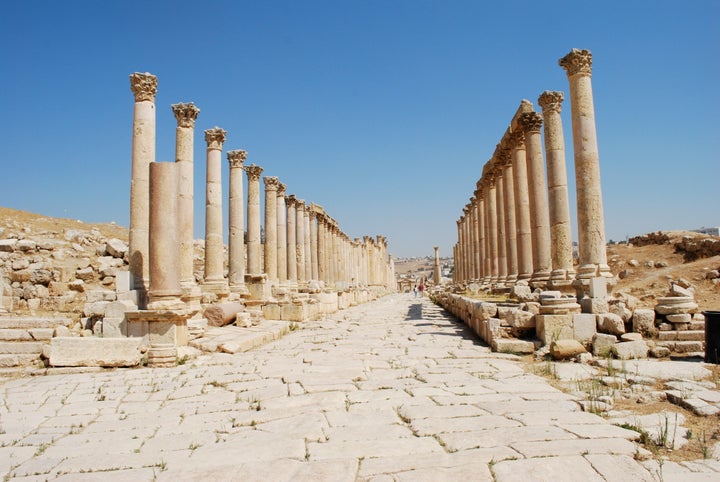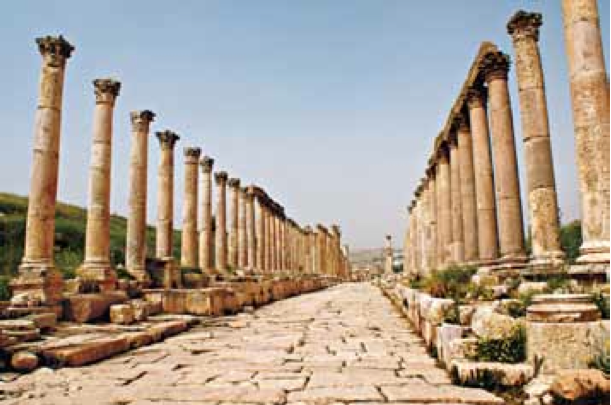
In the Footsteps of Jesus, published by National Geographic Books, is the culmination of a very personal 15-year quest for the historical Jesus. As both a historian and practicing Christian, I have long been fascinated by any historical evidence about Jesus as a living and breathing human being, underneath the layers of Christology that have been added in the centuries since.
Naturally, I'm not alone. The topic of the "historical Jesus" has generated scores of books over the last few decades, many written by such distinguished scholars as Meier, Pagels, Theissen, Chilton, Horsley and Crossan. It is therefore reasonable to ask what new insights the Footsteps book could possibly bring to the subject. The answer is that many authors are, invariably, focused on their specialty. Archaeologists look for archaeological data; scripture experts look for literary insights, and anthropologists search for cultural clues.
(Continue reading below the photos)
Each of these sources is very valuable, but what's often been missing is a modern, holistic portrait of Jesus, drawing from the full range of scientific disciplines, including the views of, say, economists or forensic sociologists. If there is one thing we've learned from modern historical methodology, it is that we can only understand a man or a woman in the full context of the cultural framework: the events, customs, people and places that shape one's character and mold one's purpose.
Here's an example. For me it is difficult to separate the historical Jesus from the socio-economic havoc wrought in Galilee by Herod the Great and his son, the Tetrarch Herod Antipas. Having served as governor of Galilee during the waning days of the last Hasmonean regime, Herod discovered the vast agricultural bounty of the region, and ruthlessly exploited this wealth to finance vainglorious building projects in Judea and Samaria after becoming king. Galilean farmers--as Joseph probably was, in addition to his woodworking skills--were slowly crushed under a triple layer of taxes: tithes due to the priesthood; tribute due to Rome; and lastly, taxes to sustain Herod's own lavish administration.
Inevitably, this led to foreclosures of farmers' plots on a vast scale. These were then combined into large estates, run by stewards, to produce surplus for markets outside of Galilee. After all, that was the whole point of Herod's construction of a vast harbor in Caesarea, on the Mediterranean coast: to plug into the booming global economy created by the Roman emperor Augustus.
This is why the Gospels often refer to large managed estates, tended by slaves (or serfs) and run by stewards--a phenomenon that (with the exception of land held by the Hasmonean gentry) hardly existed in Galilee prior to the Herodian era. It also explains the presence of thousands of poor, hungry and dispossessed peasants who flock to Jesus' words. And it shows why his Kingdom of God program for social and spiritual renewal resonated so strongly with his contemporaries, even outside Galilee.
As a result, the figure that emerges from the pages of Footsteps is perhaps a remarkably modern character: a man passionately devoted to the core tenets of his faith as well as to the imperative of social justice--two pillars of early Judaism, the Judaism of Amos, Micah and Jeremiah, which would later become the foundation of early Christianity.
Jesus and the Christ
People who've attended my lectures often ask me if probing into the life of the historical Jesus has affected my faith in Christ. "Are Jesus the Galilean and Christ the Lord two different figures," they ask. My answer is that reconstructing the historical Jesus can only deepen our understanding of the motives and aspirations that drove Jesus to become the astonishing figure that he was. The historical Jesus does not replace the Christ, since the essential purpose of Christianity was to make the message of a Jewish reformer relevant for the urgent needs of the world at large. Therefore, Jesus and the Christ complement each other; one is unthinkable without the other.
Whether we think of Jesus as a charismatic rabbi from rural Galilee or as the Son of God of John's Gospel, the core message is the same: Jesus offered a new and deeply intimate conduit with both God and one's fellow man, unencumbered by class, culture or status.
